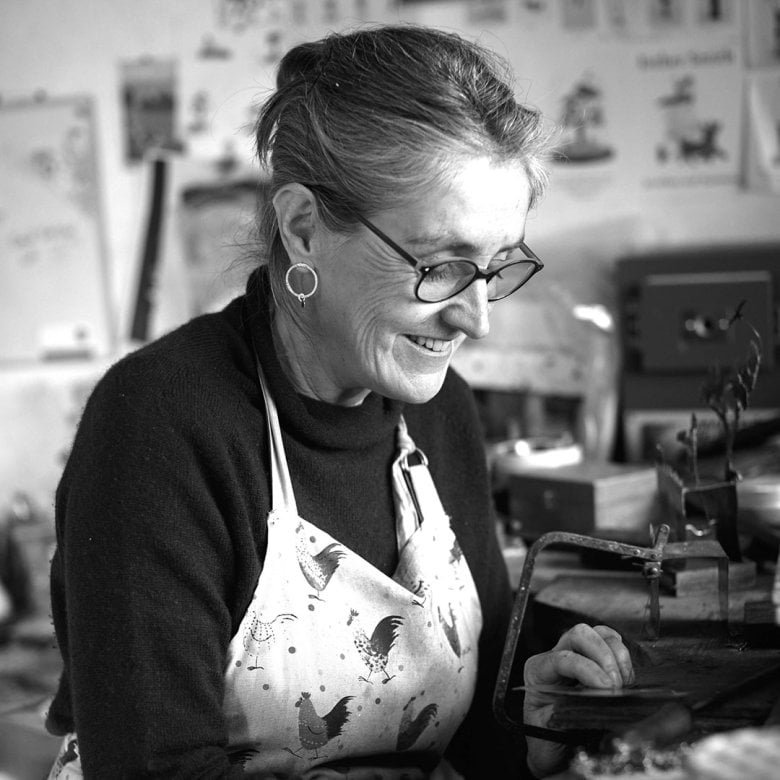“An intrinsic human need”: Technician and metalwork artist on the value of creativity
16 May 2025

Esther Smith creates captivating characters in copper, brass and silver through her moving metal sculptures. As a trained jeweller and silversmith, Esther’s journey into automata began when she settled in Falmouth, drawing inspiration from Cornwall’s creative community and wild landscape.
“I wasn’t aware of automata making as an art form until I moved to Falmouth. For years I just took delight in seeing the work of local makers but then I bought a paper automata kit for my daughter; we made it together and it became clear to me that I could use my jewellery making skills to make a copper version”, she told us. “I’ve always loved stories, so the chance to make art with moving parts to tell a story was compelling. I love to capture moments in my work that just take a little movement to make something magical happen.”
In awe of the early humans that discovered the ability to extract metal from rock, Esther’s love of her craft was born during her time studying art at university. “When I was at school, they didn’t let girls into the metal workshops, so I didn’t work with metal until I was an art student – but the first time I soldered two bits of silver together, I was hooked!”, she said. “I don’t ever sit around waiting for inspiration; inspiration comes from working with the metal itself.”
People have been making art for more than 40,000 years, and while you could argue that we could have survived without it, I want to live in a world where we don’t just survive, but thrive. That’s what I think the creative arts helps us to do.
In her role as a technician on the Falmouth Campus, Esther relishes passing her love of metalwork on to students. “I worry that there is a loss of making skills in our culture, so I’m delighted to make up for that a bit at Falmouth. I strongly believe that making things is entrenched in our human psyche and should be encouraged.”
Alongside her work as a technician, Esther runs a successful freelance business. Her unique designs are stocked in galleries across the UK as well as through bespoke commissions, and she passes this entrepreneurial wisdom on to students in addition to her technical skills.
"It’s a bit of a trope that running a creative business is ‘therapeutic’”, she explained. “Whilst there is a lot of satisfaction to be had from being a creative maker it can also be frustrating. You need to be able to market your work, plan your time, run a website, take amazing photos, manage your social media presence, keep your accounts and make inspiring pieces of art! Self-motivation, dedication and determination are essential.”
Esther ultimately believes that creativity itself is essential, and the key to a thriving community. “I think the creative arts reflect an intrinsic human need”, she said. “People have been making art for more than 40,000 years, and while you could argue that we could have survived without it, I want to live in a world where we don’t just survive, but thrive. That’s what I think the creative arts helps us to do.”